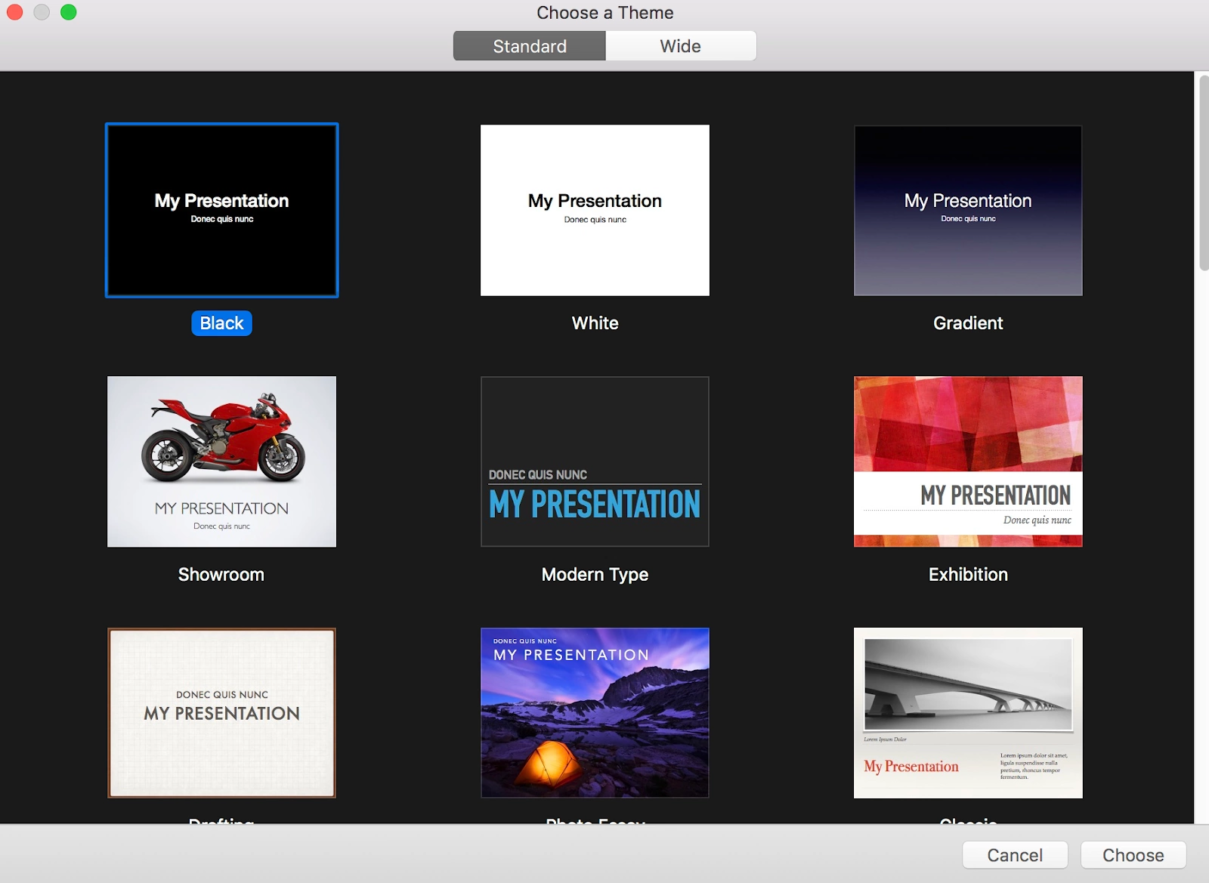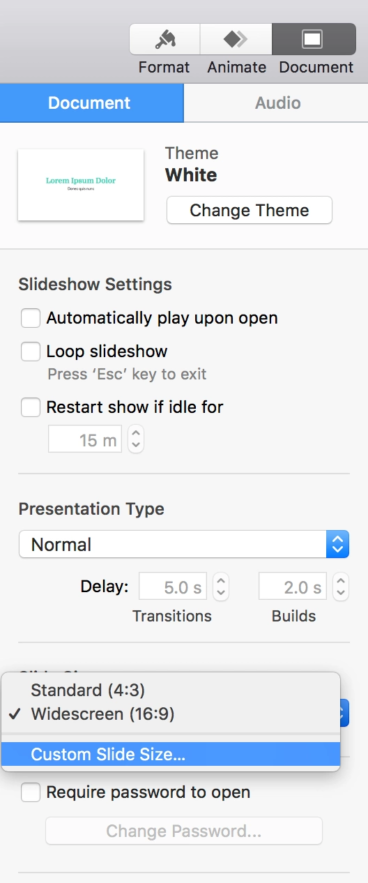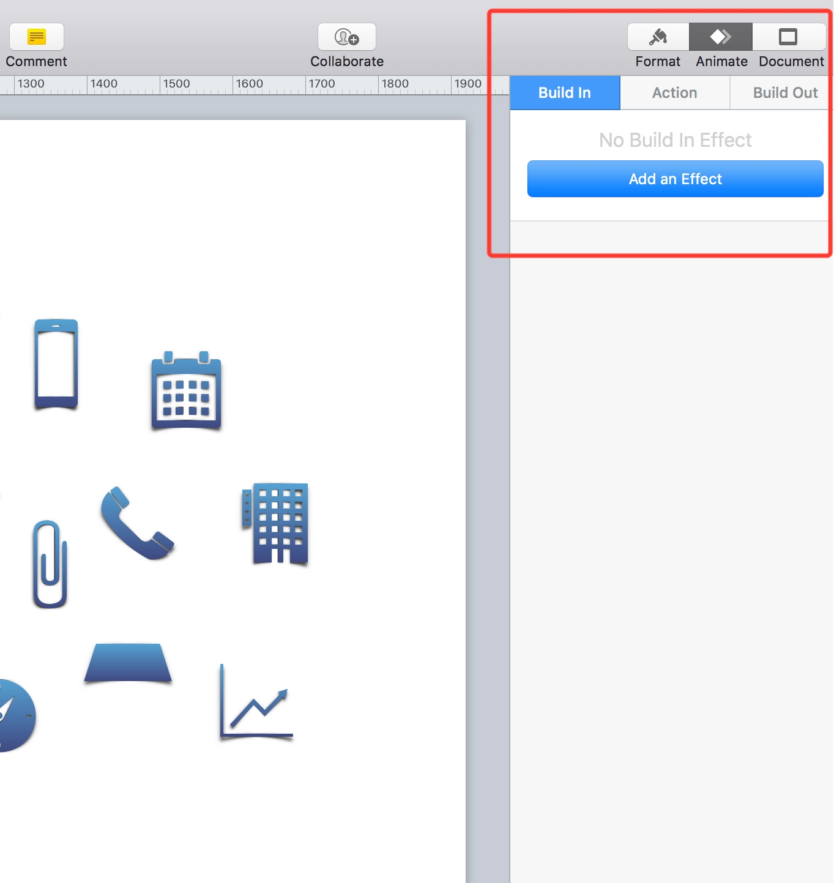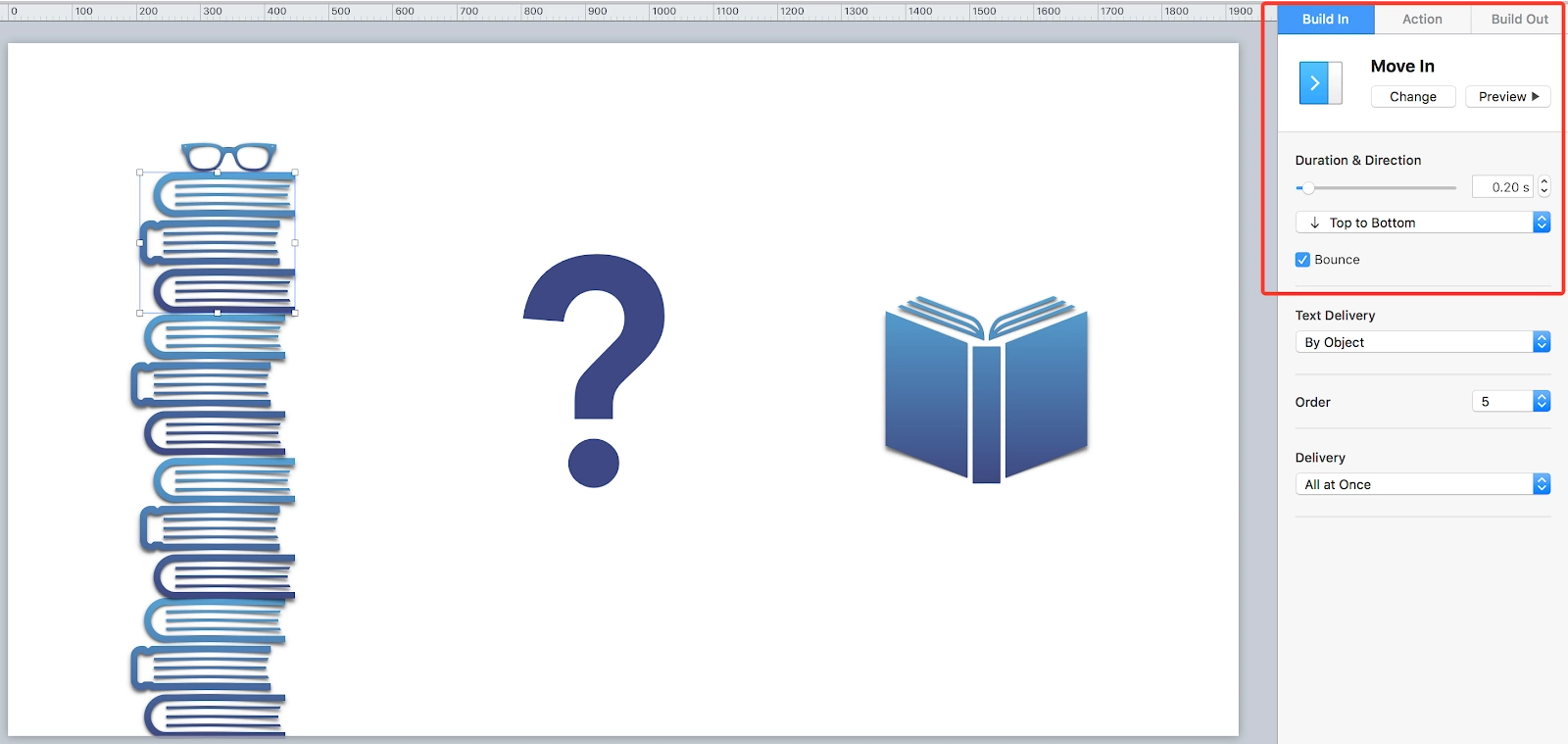Many creators are hoping to create professional-looking videos for your online course, but are not sure where to start. Using Keynote (or its Microsoft equivalent, PowerPoint) is a simple and fun way to make beautiful videos at home. It’s relatively easy to make an animated videos with Keynote. We’ll show you how.
Transforming Keynote to video
Animation on Keynote is kind of magical. And it’s way more powerful than you might think.

For example, we made this colorful white-boarding presentation all on Keynote. But, you probably couldn’t tell right away by just looking at it. Just think about all the weeks or months you’d have to spend learning complex animation software to get the same results. Even the process of selecting animation software is overwhelming, and can be a huge barrier to new course creators.
You can harness this power too. And it’s not nearly as difficult as you might think. Below, we’ll walk you through step-by-step how to make animated videos with Keynote (without it even looking like Keynote at all).
Step 1: Make your presentation
Create a new Keynote

Create a new Keynote presentation to start. You’ll see that a new Keynote theme usually begins in “standard” size. Standard isn’t good for video, so you want wide instead.

Select “Wide” at the top and choose the theme you want to begin with.
Set up the right dimensions
Before you start changing around colors, or adding text and images, this is the most important action you’ll take. Customize your dimensions so they fit YouTube’s high-quality resolution. This will also upload seamlessly onto Teachable’s platform.
To do this, check out the righthand bar of your Keynote program. Select Document. Then you’ll see a category below named Slide Size. Click on that, and toggle to Custom Slide Size.

Next, enter the optimal custom slide size. We highly recommend 1920×1080, which we will consistently use throughout the course of this tutorial on how make animated videos with Keynote.
Dimensions are really important. If you don’t get them right the first time, you’ll spend hours fixing it later.

Customize for brand colors and fonts
Now that your dimensions are set up, you can start on the design portion. It’s easy to customize Keynote slides to fit your brand colors and fonts.

You’ll find this customization on the right hand corner of your screen under Format > Edit Master Slide.
Editing the master slide means that you’ll pick the default colors and fonts for all the slides. This will make your life easier in the long run, because you won’t have to change font sizes, colors, and background colors every time you create a new slide.

You’ll get this warning because editing master slides will change all slides. Because you haven’t made any slides yet, though, this will be an asset instead of a problem. After you’ve selected your brand fonts, colors, backgrounds and overlays, you can finally get down to creating your course content.
Add images and text
Keynote leaves you plenty of versatility to add shapes, photos, charts, GIFs.

We especially love using their “Shape” section to animate our own videos. You can select as many of these icons as you want, then customize the color or add dimension.
For the SEO course we created, we used the free Keynote icons under “Shape” to animate the introductory video. Here’s an example of how it can look:

Play around with animation
Once you’ve added all the imagery and text you want for each slide, you’ve finally arrived to the part that makes this program special: animation.
This is where you can bring your keynote slides to life and make them look like a professionally animated video. Think of this as a shortcut to making professional, fun, highly engaging video, with just a few clicks of a button.

Click on the piece of text or image that you want to animate. Make sure you’ve toggled to the Animate button in the right hand corner, which sits between Format and Document.

Here are what the Keynote animation features mean:
- Build in – Whenever you build something in, it means you’re introducing that image or text to the viewer for the first time. The build in action you choose will bring your selected object into the slide.
- Action – The action button is for any object that is already in the slide. It won’t appear, it will already be there on the screen. You’ll use this feature when you want to animate or emphasize something that’s already on the screen.
- Build out – When you build out an object, you make that object leave the screen. The object will already be on the screen, and this exits with your build out of choice.
The best part? There are all different kinds of animations. Toggle around and hit the preview button to see what they’re like.
They’ll make your selected text or objects bounce, fly, go up in flames, burst into fireworks, or wipe away. With such a variety, you can make your videos look way more fun and engaging.

For example, in this part of my video, we used the transitions Move In, Scale, and Move Out. We also checked the Bounce box to give the objects a little pep.

Other features worth mentioning when learning how to make animated videos with Keynote:

- Duration – Duration means how long the selected animation will last. You can choose between a fraction of a second and a whole minute. Play around and see what pacing fits your video best.
- Direction – From which direction will your object appear? With most text and images, you can choose any different corner of the slide.
- Order – This part is important. You don’t want your supporting bullet to enter the slide before your headline. You can select your chosen object and then decide its order when building in and building out. Test all of your slides together to make sure they pop up in the right order.
Want to see more keynote to video clips? Here’s another Keynote animation example of the slides.

Note that we’ve put this in GIF format for easier viewing, but the frame rates are seamless and clean in the actual video.
Step 2: Change your screen formatting
Once you’ve completed your animation, you’re ready to prepare for recording. Many people hit snags in this process because the format of their screen is different from the format of their slides.
First, download SwitchResX, or a similar screen resizing software.

Once you’ve installed it, you can temporarily change the resolution size of your screen. Go to SwitchResX > Color LCD > Current Resolutions. You’ll see what your screen is already at (mine is usually set at 1680×1050).
Remember how we formatted the Keynote slides to 1920×1080 in the beginning? You’ll select the same screen resolution here to make sure your slides and your screen are perfectly aligned.

You’ll notice your screen resolution shift and things will look a little different. Don’t worry, that just means it’s working. Now, you’re ready to record.
Step 3: Select your recording method
There are several different ways to record your Keynote to video once it’s ready for action. Which method you choose largely depends on your preferences, but I’ll list some pros and cons of each.
Keynote recorder

As it turns out, Keynote has its very own recording app.
Pros:
- You can read your slideshow notes while you’re recording, without them showing up in the end product.
- You’ll be taken to a recording “staging” area that will help you see your Keynote animations and slides one step ahead. That means you’re less likely to flub up your lines.
Cons:
- It might be hard to set up an external mic if you would prefer your own while you’re recording the slides.
- You’ll have to do a proper recording all in one shot. It’s harder to redo recordings with this feature.
Screenflow
Screenflow is an app that can simultaneously record your screen and your computer audio at the same time.
Pros:
- Allows you to record your voice and slides at the same time.
- Many people find easy to use.
Cons:
- Can be buggy.
QuickTime
Consider recording the screenflow first and then bring in audio recorded from an external mic in later.

You can also see your Keynote program while using QuickTime. All you have to do is enter the program and then select File > New Screen Recording. You can select the entire screen instead of cropping because you’ve already formatted the screen correctly.
Once you’ve completed recording a video, make sure to export it in the correct dimensions as well. (See why we wanted you to know about all of them!)

For example, with QuickTime, once the recording is over, you’ll want to save the file in the correct dimensions as well. You can do this by going to File > Export As > 1080. This fits the YouTube-style resolution we’ve been consistently using throughout.
Step 4: Choose your assembling method
Now, it’s time to mix your animated slides and audio together.
If you’ve decided to go with a computer mic and recorded this all together on Keynote, you may even skip this step. (We do recommend that you use an external mic or headphone mic if possible. You can read more about recording quality sound here.)
If you’d like to add intro and outtro slides, music, or other effects, you’ll need video editing software to complete the job. Here are some basic options, along with the pros and cons.
Apple Movie
Apple Movie comes with Macs and has an incredibly simple user interface.
Pros:
- Free.
- Very beginner friendly.
- Drag and drop makes it easy to visualize where your animated video and audio are aligning.
Cons:
- Overly simple. Doesn’t allow you to edit your video in a more advanced way.
- Can sometimes be more slow and clunky than more advanced programs.
Adobe Premiere Pro
Adobe Premiere Pro is the industry standard for video editing. The industry standard used to be Final Cut Pro, until their product became too similar to Apple Movie.
Pros:
- Offers advanced options for special effects, audio gain, and lighting.
- Seamlessly integrates with AfterEffects, Audition, and all other Adobe software.
- Is easier to layer narration, music, sound effects, and different types of visuals.
Cons:
- Costs money for a subscription.
- Has highly advanced features that can be harder for beginners to understand.
- Can be easy for beginners to accidentally mess up and damage their files.
Overall, the choice of video editor is yours! Do your research to see which one would best fit your needs and your process to make animated videos with Keynote.
Step 5: Triple check your dimensions
We’ve talked about dimensions a lot in this post. But this is tip a million and one: Check your dimensions throughout every step of the process when it comes to understanding the process to make animated videos with Keynote. Here is where you’ve ensured your dimensions are 1920×1080 so far:
- Keynote slides
- Screen resolution before recording
- Saving the completed screen recording at the correct resolution
Next, you’ll have to look out for these, too:
- Setting up your video editor for the correct dimensions
- Exporting video for the correct dimensions
- Uploading for the correct dimensions
Step 6: Upload and share
You’ve created your slides. You’ve learned how to make animated videos with Keynote. And then you’ve edited and uploaded them with the perfect dimensions in mind. Once you complete these steps, you’ll have gorgeous, animated videos built for an exceptional online course.
Still curious what they can look like? Here’s another video we produced with Keynote:

And a couple others we found online:


Those videos will look so professional and may give you the justification to charge more for your courses.
Join more than 150,000 creators who use Teachable to make a real impact and earn a real income.









